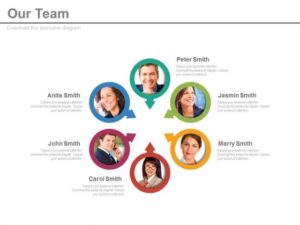
How to effectively onboard your new hire in six steps?

Onboard your new hire in six simple steps.Onboard your new hire for better retention of the new hire as well as a better relationship with the colleagues in the workplace.

Hiring new team members is one of the biggest challenges for every organisation. Once you hunt down the right person, you need to provide him with adequate training and ensure you set them up for success. An excellent onboarding process for new employees is the key to that success.
Are you in search of the ideal way to welcome new employees to the workplace? Then, follow these six steps to effectively onboard new employees to your organisation.

Six steps to effectively onboard your new hire to your organisation.

- Prepare the office for the new arrival.
The first day on the job should get organized and scheduled before the new person walks through the door. Never let them discover that none of their new co-workers was even aware that they were coming. Or they see their supervisor scrambling to find them a workspace or the tools they need to do their job, like a phone or computer. It can be disheartening to the new hire and make them wonder why they got recruited in the first place.
You can avoid this dilemma by taking the time to prepare their workstation before their arrival and letting their new colleague know which day their new team member will be starting.
Employers should build out a schedule in advance that covers learning the job in particular and company policy and process in general. Share this plan with your new employee in advance. Also, send a copy to all employees in the company who is involved with the onboarding process.
- Provide a grand tour inside the office
A new office can confuse the new person, especially when they don’t know anyone and have no idea where anything is. Imagine needing to use the restroom on his first day and not knowing where to go. So, start your new employee off with a tour of the office and the facilities, introducing them to co-workers as you go along. There’s little chance that they will remember everything, but it will help them feel more relaxed approaching people with queries later on if they know they have already got introduced.
- Assign a mentor.
One of the best facilitation tactics for onboarding is a mentor relationship. Mentors provide proper guidance that goes beyond traditional training. Match up an experienced employee with the newbie in the early stages of training. A mentoring relationship will prove valuable to the new employee’s integration into the workplace.
- Make positive introductions a priority.
“This is Susan, and she will be taking your job one day” It is obviously a horrible way to integrate a new employee into the workplace. Create goodwill toward the new hire by introducing them to the current team with a short explanation of the person’s qualifications and expertise. This type of introduction helps the current employees become familiar with and accepting of the new member. Also, Avoid statements that can create competitive or insecure feelings.
- Request feedback from a new hire.
Consistent feedback from the new employee is valuable in knowing which aspects of the onboarding process work and which ones need to get twitched. Regularly ask for input on the training process, and measure its effectiveness.
- Provide a cohesive goal.
From the beginning, every new or seasoned employee should understand the big picture company goals, along with his or her specific tasks. A common goal helps to create greater collaboration and harmony.
Facilitation strategies for integrating new team members require planning and follow-through. The results bring a more dedicated, engaged employee and fewer workplace disputes, which is absolutely worth the effort!
Employees are an organisation’s most valuable asset. Once you find out great employees, you need to take steps to keep them. Remember that welcoming a new employee begins as soon as the job offer is accepted. It’s a process that can redefine your business culture if you do it the right way.






